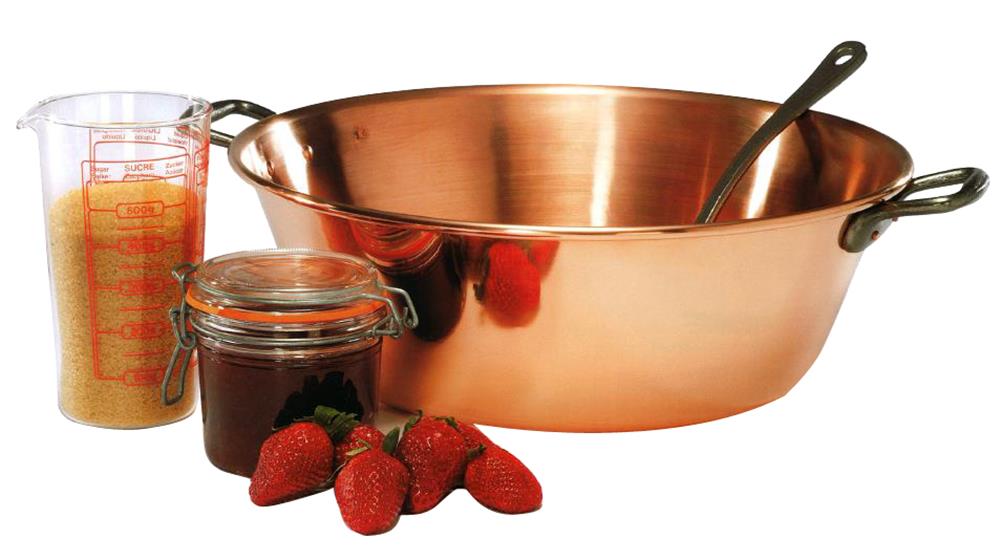As soon as the first fruit are ripe for picking, the vexed question of jam comes up once again! How can you preserve and concentrate all the flavours of the fruit without using too much sugar?
Copper is not essential. Other materials such as pure and thick aluminium are also suitable, but it has to be said that copper has many advantages.
Without revealing any mystical secrets, here are three essential reasons that explain why your jam will be beyond compare if you make it in a copper basin.
Why copper for jam? - Heat distribution. When cooking different sugars, temperatures must remain low. The aromas of the fruit will be spoiled if they are stewed and you want to avoid caramelising the fructose that transforms at 110°C (230°C)! Copper is particularly good at transmitting heat. In fact, it is a champion conductor. It absorbs heat very quickly and redistributes it evenly. You avoid hot spots and your cooking temperature is homogenous.
-
The action of the copper on pectin molecules. When cooking, the fruit release molecules of pectin that is naturally present in the cell walls. Once again, copper has the advantage here: it encourages the blending of these long molecules. Once they have entered into contact with each other, the pectin molecules form a network, like a kind of 3 dimensional net that covers the entire jar, trapping water and aromas. With a little lemon, jams take even better: cooking time is shorter and you retain all the flavours and scents of the fruit.
Why use a basin for jam? -
The wide shape encourages evaporation. When water is lost, the sugar level in the jam increases. If you want to avoid adding too much sugar and you want to concentrate the flavours, you need to evaporate the water contained in the fruit cells.
Leave your fruit to macerate to remove water from the cells.
Use a wide basin to have a wider cooking evaporation surface.
This capacity for fast evaporation allows you to have shorter cooking time with less sugar added, altering the taste of the fruit. Less water means less added sugar and more flavour.
Happy jam making!
When water evaporates, the concentration of sugar increases and the boiling temperature exceeds 100°C. The greater the sugar concentration, the higher the boiling point of your jam. Do not exceed 110°C (230°F) as the fructose will caramelise. Use a thermometer! To find out the exact level of sugar in your jams, you can measure it using a
Recherche-refractometre.aspx> refractometer.



















































































